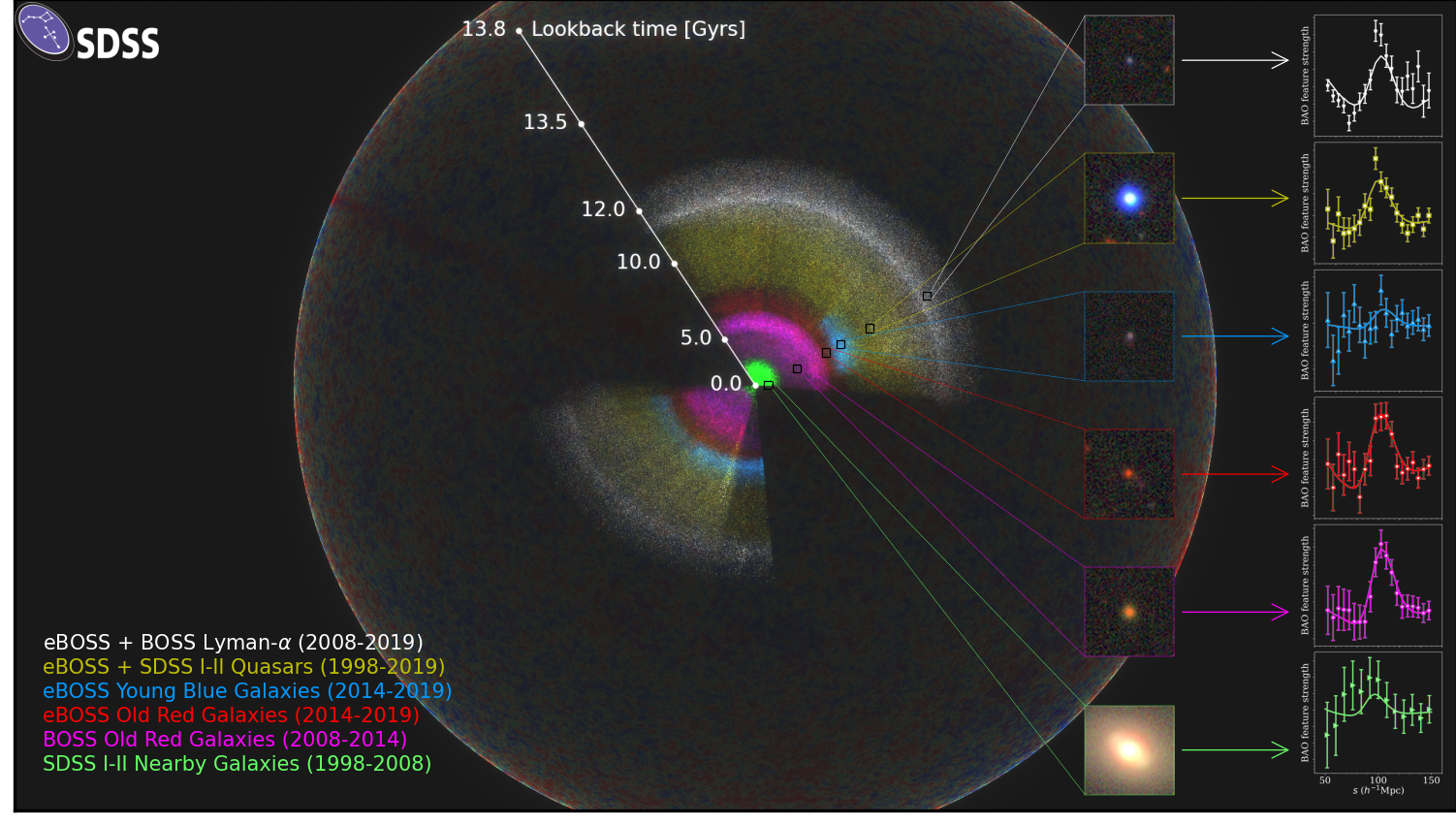Apr 26 2021
The latest scientific results published by the extended Baryon Oscillation Spectroscopic Survey (eBOSS) collaboration include two studies on dark energy.
 Exploration of the Universe by the SDSS mission during the past two decades (1998-2019). Image Credit: eBOSS collaboration.
Exploration of the Universe by the SDSS mission during the past two decades (1998-2019). Image Credit: eBOSS collaboration.
These studies were headed by Professor Gongbo Zhao and Professor Yuting Wang, respectively, from the National Astronomical Observatories of the Chinese Academy of Sciences (NAOC). The study headed by Professor Zhao was published recently in the Monthly Notices of the Royal Astronomical Society.
Professor Zhao’s research group used eBOSS observations to quantify the history of cosmic expansion and structure growth in a large volume of the old universe, corresponding to a distance range from 0.7 to 1.8 billion light-years away from Earth. This volume had never been explored previously.
The research leveraged the so-called “multi-tracer analysis” technique, which mitigated the observational systematics put forward and executed by Professors Zhao and Wang.
This work detected the existence of dark energy at a significance of 11 sigma, which is the strongest evidence ever on dark energy from galaxy surveys. The eBOSS observations are consistent with the dynamical dark energy probed by our team using the BOSS survey four years ago.
Gongbo Zhao, Professor, National Astronomical Observatories, Chinese Academy of Sciences
Data analysis is one of the critical challenges of the cosmological implications of galaxy surveys, particularly the development of new techniques to enhance statistical accuracy and mitigate systematics. As the first galaxy survey to observe different types of galaxies in an enormous cosmic volume, eBOSS enables the use of multi-tracer analysis.
Cross-correlating multiple types of galaxies is an efficient way to reduce statistical uncertainties, with observational systematics mitigated at the same time, which is key to obtaining robust cosmological results.
Yuting Wang, Professor, National Astronomical Observatories, Chinese Academy of Sciences
The universe today is dominated by dark energy. Thus, it is highly crucial to unravel its nature. The eBOSS collaboration includes more than 30 leading research institutes on astronomy across the globe, including NAOC, and was set up to address the problem of dark energy. eBOSS has been operating since 2014 and has captured more than 1 million spectra in the redshift range of 0.6.
eBOSS has now completed its mission but it is only the beginning of the next chapter. The experience with eBOSS is vital for cosmology that involves larger galaxy surveys, such as the Prime Focus Spectrograph (PFS), Chinese Space Station Telescope (CSST), and Dark Energy Spectroscopic Instrument (DESI).
This study was financially supported by the Natural Science Foundation of China, the Ministry of Science and Technology of China, and the Chinese Academy of Sciences.
Journal Reference:
Wang, Y., et al. (2020) The clustering of the SDSS-IV extended baryon oscillation spectroscopic survey DR16 luminous red galaxy and emission-line galaxy samples: cosmic distance and structure growth measurements using multiple tracers in configuration space. Monthly Notices of the Royal Astronomical Society. doi.org/10.1093/mnras/staa2593.